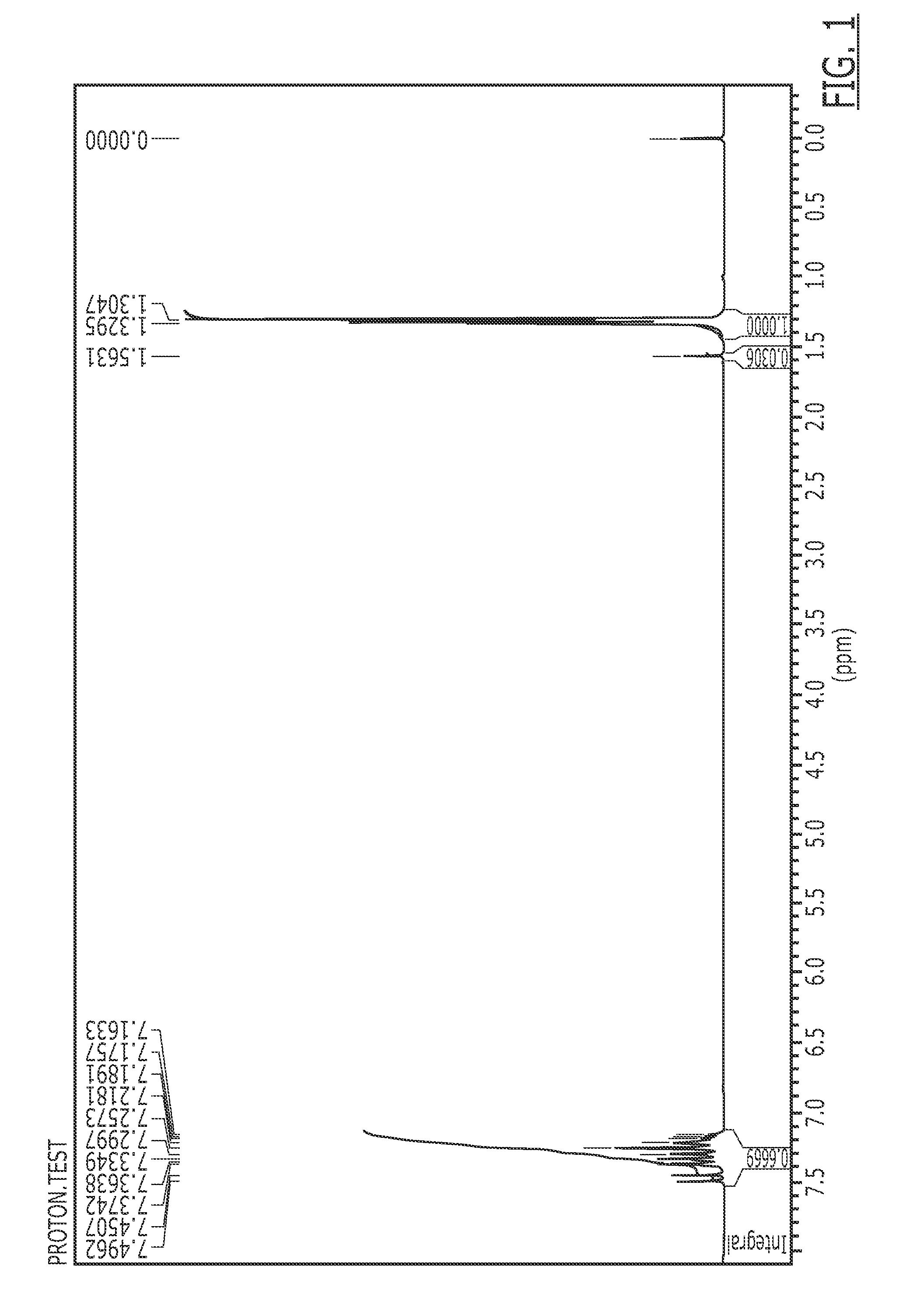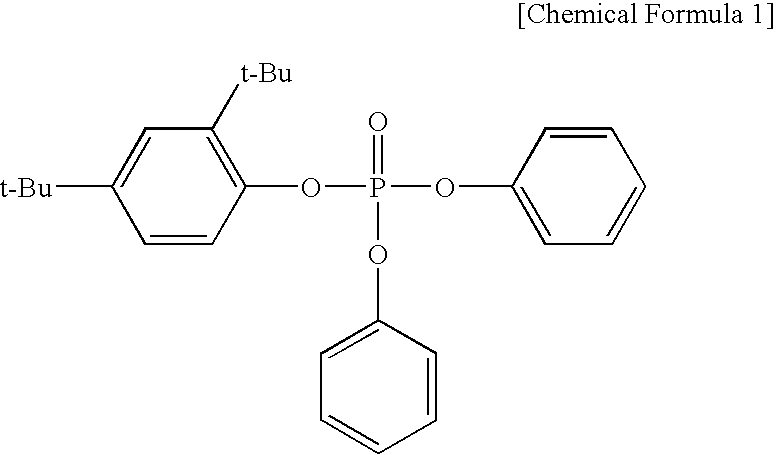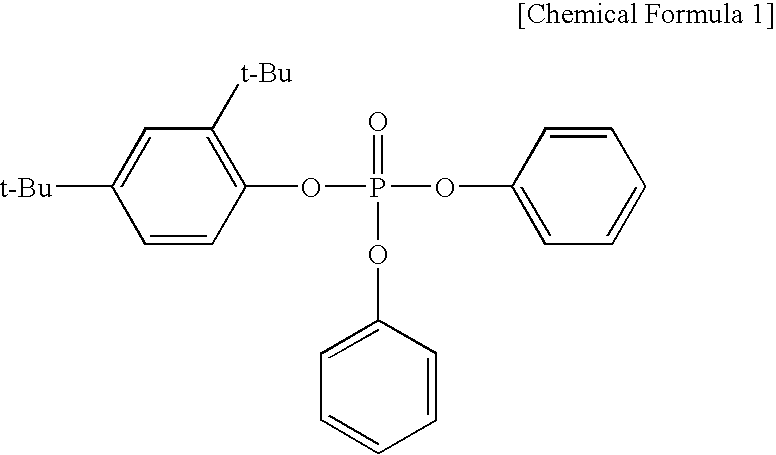Flame retardant and impact modifier, method for preparing the same, and thermoplastic resin composition including the same
a technology of impact modifier and flame retardant, which is applied in the direction of dyeing process, plastic/resin/waxes insulator, group 5/15 element organic compounds, etc. it can solve the problems of harmful health effects, thermoplastic resins can easily spread fire from an external ignition source, and thermoplastic resins can easily ignite and combust fire, etc., to achieve good heat resistance and flowability, good flame retardancy and impact strength, good balance of properties
- Summary
- Abstract
- Description
- Claims
- Application Information
AI Technical Summary
Benefits of technology
Problems solved by technology
Method used
Image
Examples
example 1
[0073]To a blend of 75 parts by weight of rubber modified polystyrene resin (HIPS, HG-1760S manufactured by Cheil Industries Inc.) and 25 parts by weight of poly(2,6-dimethyl-phenylether) manufactured by Mitsubishi Engineering-Plastics Corp. of Japan (product name: PX-100F) is added 2,4-di-tert-butylphenyl diphenylphosphate prepared from the above preparative example in a ratio as shown in Table 1 to extrude through a conventional twin screw extruder at a temperature range of 200-280° C. into pellets. The resin pellets are dried at 80° C. for 2 hours, and molded into test specimens using a injection molding machine at 180-280° C. with a mold temperature of 40-80° C. The flame retardancy is measured in accordance with UL94 VB at a thickness of ⅛″. The Izod impact strength is measured in accordance with ASTM D-256 at a thickness of ⅛″ (kgf·cm / cm).
examples 2-3
[0074]Examples 2-3 are conducted in the same manner as in the Example 1 above except that polycarbonate resin (product name: Panlite L-1225 Grade manufactured by Teijin Company of Japan) is used as a base resin and that 2,4-di-tert-butylphenyl diphenylphosphate is used in a different amount.
example 4
[0075]Example 4 is conducted in the same manner as in the Example 1 above except that a blend of polycarbonate resin (product name: Panlite L-1225 Grade manufactured by Teijin Company of Japan) and ABS (g-ABS / SAN=3 / 7) is used as a base resin and that 2,4-di-tert-butylphenyl diphenylphosphate is used in a different amount. The g-ABS is manufactured by Cheil Industries Inc. with a product name of CHT. The SAN is manufactured by Cheil Industries Inc. with a product name of AP-70.
PUM
| Property | Measurement | Unit |
|---|---|---|
| temperature | aaaaa | aaaaa |
| temperature | aaaaa | aaaaa |
| reaction time | aaaaa | aaaaa |
Abstract
Description
Claims
Application Information
 Login to View More
Login to View More - R&D
- Intellectual Property
- Life Sciences
- Materials
- Tech Scout
- Unparalleled Data Quality
- Higher Quality Content
- 60% Fewer Hallucinations
Browse by: Latest US Patents, China's latest patents, Technical Efficacy Thesaurus, Application Domain, Technology Topic, Popular Technical Reports.
© 2025 PatSnap. All rights reserved.Legal|Privacy policy|Modern Slavery Act Transparency Statement|Sitemap|About US| Contact US: help@patsnap.com



